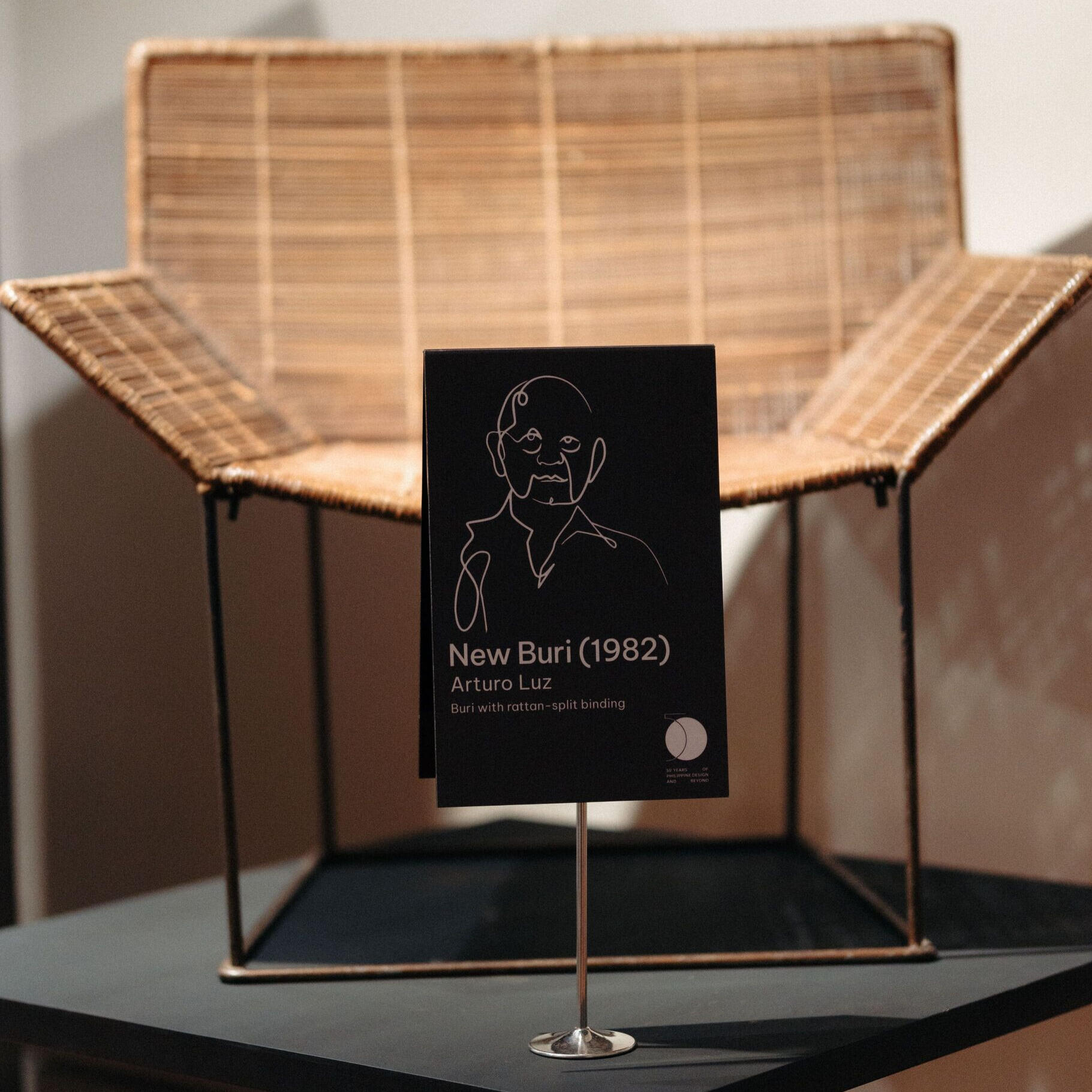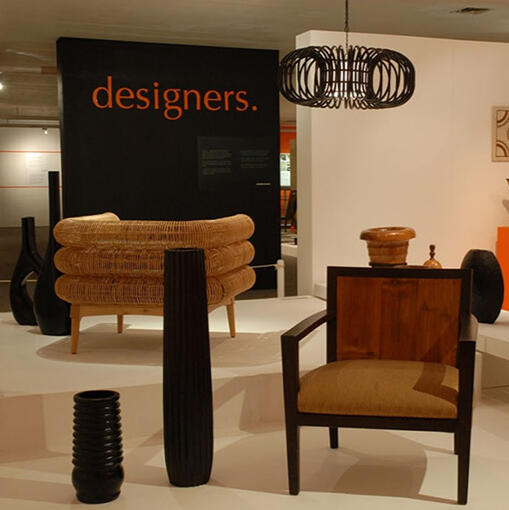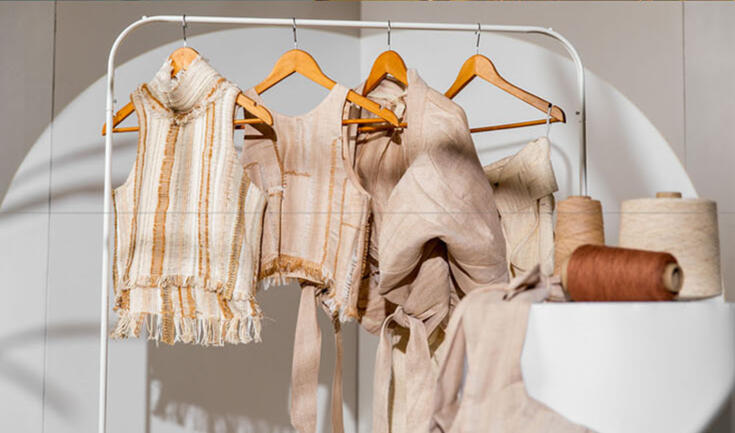Fifty Years of Philippine Design and Beyond

“Fifty Years of Philippine Design and Beyond” is an exhibitionary gesture by the Design Center of the Philippines on the 50th Anniversary of its foundation in 1973. It commences and anticipates other potential projects—publishing, educational material, traveling exhibitions, public discussions, and so forth—that in due course will clarify Philippine Design as a distinct ethos and aesthetic.
In its present first incarnation as an exhibition, the fifty-year retrospective is a gathering of objects and images that represent striking “moments” during which radical or surprising shifts occurred in the ways designers design in the Philippines.
Each selected object or image was created by change-makers; each, the arrival or refinement of ideas of how to dress homes and selves, express personality, assert identity, and give detail to reality. Through the 50 years spanning the turn of the millennium, these consist of the pivotal objects that Filipinos created and successfully introduced to daily lives locally and overseas.
The objects and images are organized chronologically. They constitute a timeline that is curatorially pitched to say that the changes built one over the other, and that such cumulative change in design shaped definitions of what constitutes quality of life across sectors and classes in the Philippines and elsewhere.
The exhibition is also curatorially conceptualized to encourage viewers to look with a historian’s eye at the objects they live with. Certain ways of living life began at certain points in history, with ideas embodied in designed objects and pictures that reimagine the world. The objects are ideas, and each contains a historical moment.
Over the last 50 years, the ideas embodied by objects and images designed by Filipinos show increasing precision understanding of global commerce these accoutrements of life. This precision understanding notably involved drawing deep from Philippine traditions, which were never abandoned in the embrace of globalized trade.
Design Center of the Philippines conducted Focus Group Discussions to collectively articulate Philippine Design, and convened a jury of peers to select the featured designers for “Fifty Years…” The exhibition’s Curator therefore built on the insights of designers themselves.
Curator
Marian Pastor Roces
Exhibition Designer
Architect Royal Pineda
ABOUT ART x DESIGN EXHIBITION LAUNCH
In commemoration of the National Arts Month, the 50 Years of Philippine Design and Beyond Exhibition will unveil the expansion of the previously launched exhibition to include the section of Arturo and his peers featuring National Artists during the time of Arturo R. Luz, the inaugural Executive Director of Design Center as a National Artist for Visual Arts.

A key highlight of the ART X DESIGN program is the special reception on the 23rd of February that will be a launch of the expanded exhibition with the new objects added to the exhibition as well as a formal launch of the educational programs and various activations in celebration of the 50 years of Philippine Design and Beyond Exhibition.
The reception aims to invite His Excellency, President Ferdinand R. Marcos, Jr., and First Lady Louise Araneta Marcos, including members of the Cabinet, Senate, House of Representatives, the Diplomatic Corps, and key stakeholders of the Philippine Creative Industries.
ABOUT DESIGN CENTER OF THE PHILIPPINES
Since its creation in 1973 through Presidential Decree No. 279, Design Center of the Philippines has been at the forefront of pushing a national design agenda directed at driving global competitiveness and uplifting the quality of life.

Propelled by the Filipino value of malasakit, Design Center’s efforts go beyond promoting the value of good design and onto inspiring industries to create innovative human-centered solutions to address and anticipate challenges, shifts, and disruptions of the fast-changing and currently uncertain times. The agency also serves as a nucleus of the creative and design communities in the Philippines, fostering synergy and collaboration among them, the academe, the government, and innovation partners.

Design Center stands on a foundational history of design excellence and five decades after its establishment, the Center is moving forward to inspiring the next fifty years of Filipino ingenuity and creativity.

FROM DESIGN INTERVENTION TO DESIGN SOLUTION
The value of good design lies in the breadth of opportunities it creates for the designers as well for the life-improving benefits to its end users. Throughout the history of Design Center, the agency championed design’s role as a creative, strategic, and innovative tool for positive development that make an impact in the Philippines and in the world.
The pioneering years of Design Center paved the way for innovative design in the development of Philippine products and handicrafts, forged new mindsets with an intensive design education program, and reenergized the country’s cottage industries centered on Philippine craftsmanship. This design-led economic movement in the quality and global competitiveness of Philippine non-traditional export products put the Philippines in the design map, supported by the country’s prolific furniture designs that masterfully blended indigenous materials with local craft skills.
The Design Center carried an energized design appreciation from local and global markets onto stimulating the growth of more MSMEs, particularly those in the countryside, through intensified design intervention appropriate to the capabilities of the manufacturers, with the emphasis on good design as good for business. This signaled the birth of design-driven sectors in Philippine businesses and manufacturing industries.

The passage of the Philippine Design Competitiveness Act in 2013 strengthened Design Center’s role in cultivating the country’s creative capital and design culture, and in integrating design to accelerate businesses and sustainable national progress. To this end, Design Center broadens the strokes by which design is used to create new value, new markets, and new user experiences that enable inclusive and sustainable economic growth.
Such progress on the course of Philippine design circles back to the words of the agency’s inaugural executive director (1973 – 1987) and National Artist for Visual Arts Arturo R. Luz in a speech on the objective of design: “products must be efficient, original, and competitive. It must be well made, safe, and durable. It should be simple to make and use. It should be easy to look at, touch and feel. It should also provide benefits to the maker, seller and user. And it should lead to other systems and solutions.”
DESIGN FOR COMPETITIVENESS AND INNOVATION
From design interventions to boost livelihood and enhance craftsmanship, design is now seen as an integral element for strategic transformation, providing an array of opportunities for value creation to boost national competitiveness and innovation, including addressing bigger systemic social and global problems.

As Design Center’s present Executive Director Rhea O. Matute says: “Design is an essential human skill for the 21st century – driving the creation of responsible and intelligent products, services and systems of the future. Therefore, we have the immense responsibility to use our design skills and expertise not simply for aesthetics or to make things beautiful but to create a just society and sustainable economy for all.”
With the magnitude of such goal in mind, the Design Center bolsters the promotion of a more intentional and critical use of design, anchoring its programs and projects on a quadruple bottom-line approach involving people, planet, prosperity and purpose. Moreover, the Design Center integrates the Philippine value of ‘malasakit’ (loosely translated in English as compassion) at the core of Philippine design.
The Design Center reinforces its Design Innovation thrust to elevate the country’s resources towards innovative solutions, advancing its design agenda through forward-looking research and development that combines creativity and strategy to bring together design and business to improve the quality of life.

Design Center also works toward making Design Thinking a national competency to increase the Philippine design industry’s economic and employment contribution. The Center is committed to building the next generation of globally competitive Filipino designers, equipping them with the mindset and skillset needed to drive innovation.
Further, Design Center leads the way in raising awareness on the value of design and creativity through its design events that inspire good design and innovation for nation-building. Design Center hopes to connect Filipinos to good design and Philippine design to the world by serving as a hub for creative minds to exchange ideas, share experiences, and explore solutions to create systemic and strategic changes.
Underpinning the value of design in the country’s economic, social and cultural dimensions, Design Centers is optimistic that design will be made more accessible and responsive to the diverse needs and aspiration of the Filipino people of today and future generations.

DESIGN FOR ALL
For the years ahead, Design Center envisions a nation built on a strong foundation of design culture, equipping and inspiring every Filipino with the right tools to create freely, to design purposefully, and to innovate boldly.

The agency also looks forward to a nation navigating through inevitable movements and requirements in the future, where design is an embedded and necessary driving force in the constant improvement of the quality of life
for all.

Source: 50yearsofphdesignandbeyond.carrd.co
